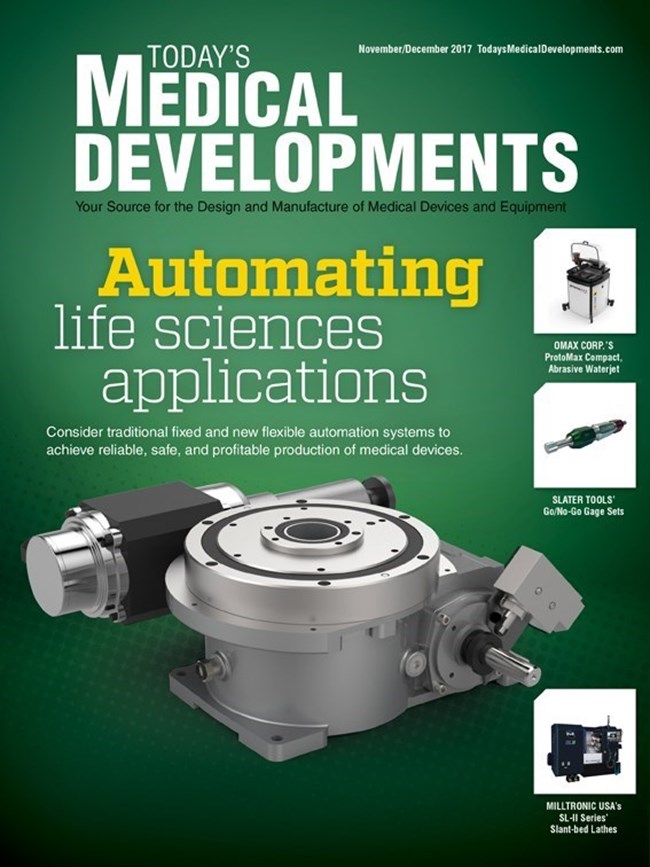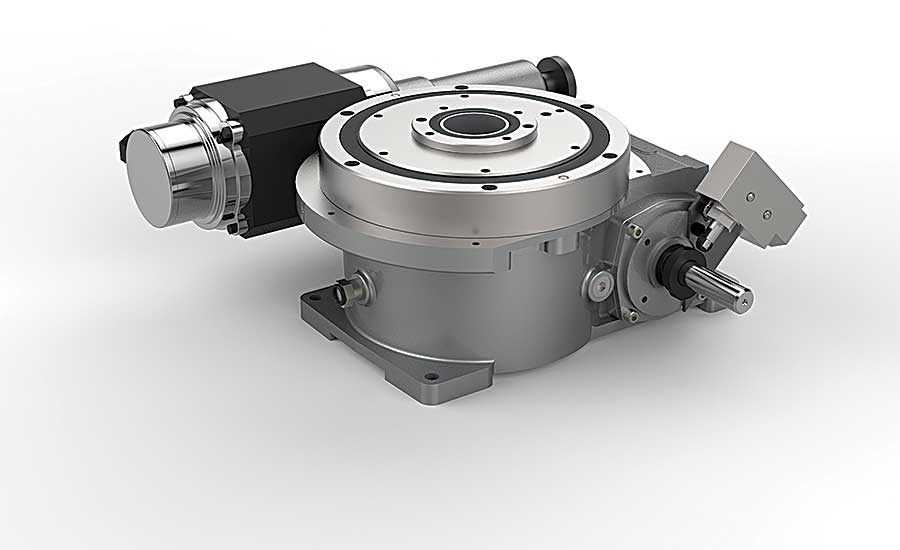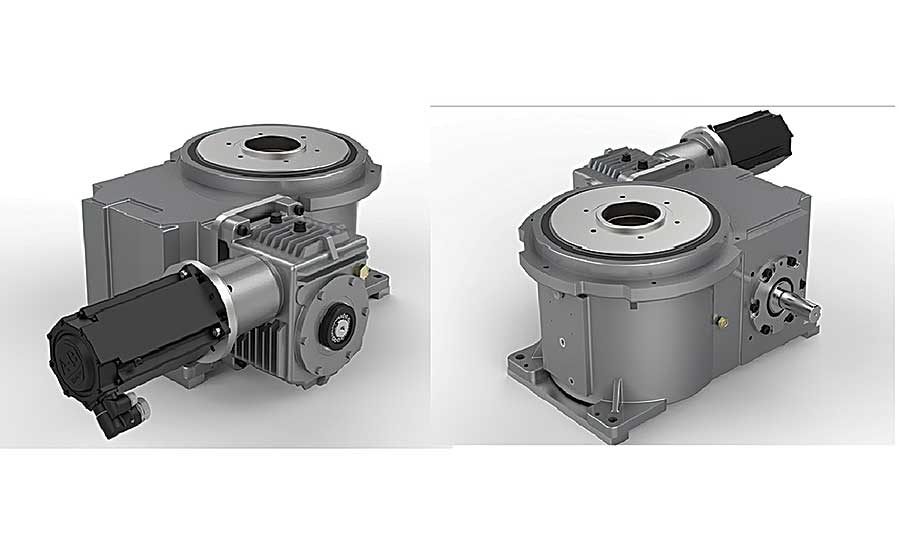■ Today's Medical Developments 封面故事 Cover Story : 自動化在生命科學的應用Automating life sciences applications1/14/2018
考慮傳統的穩定和新的靈活的自動化系統,以實現可靠,安全和盈利的醫療器械生產。 Consider traditional fixed and new flexible automation systems to achieve reliable, safe, and profitable production of medical devices. http://magazine.todaysmedicaldevelopments.com/article/novdec-2017/automating-life-sciences-applications.aspx By TOM BEMER AND RAY TYNCZUK No manufacturer has a greater responsibility than one who creates medical devices for protecting the health and well-being of its customers. If not manufactured properly, these devices can cause harm or death, so designers and manufacturers must take great care that their end products meet the highest quality standards.
One area of consideration is optimizing process control capabilities. Afixed automation technology to accomplish this revolves around the operation of the fixed-stop index cam for manufacturing, assembly, and packaging of medical devices. However, automation advancements have evolved to include flexible systems with a constant-lead cam as their means of controlling the motion. Defining terms Fixed-stop cams are mechanical automation components machined for use on an indexer, with two distinct operating periods: Index period – Number of degrees on the cam that are used for moving the indexer into position Dwell period – Remaining portion of the cam used to determine the length of the cam’s in-station position where no movement occurs during indexing If an indexing operation calls for the cam to rotate 90° and stop, it’s cut so those operational parameters are always achieved, with no change in or added movement allowed. By comparison, the index characteristics of the constant-lead cam are not determined by the way the cam has been cut, but rather electronically by a programmable device – usually a servomotor – instead of having the indexing and dwell times built into the cam. Constant-lead cams have a programmable indexing period, but no true dwell period since the servomotor is designed to continually use infinitesimal movements controlled by thousands of encoder points on the motor to seek correct position, even when the cam has stopped. The subtle differences in fixed-stop and constant-lead cams need to be considered when deciding which technology to deploy. Pros, cons Fixed automation pros:
Rotary or linear movement Automation systems are typically available in two configurations: rotary indexers that move in a circle as predetermined movements and tasks are completed, or conveyor systems that move parts or products in a straight line through production. Rotary and linear systems can be outfitted with either fixed or flexible automation systems, and specific considerations must be weighed before choosing fixed or flexible automation for each. A typical rotary indexing system can feature a six-position dial plate, where the first one loads the product, the second performs gluing, the third performs welding, the fourth drills a hole, the fifth inspects the product, and the sixth offloads the product. Traditionally the sweet spot for fixed automation, these systems can be modified to feature programmable movement through a servomotor, making them a choice for operations where a flexible system can perform well. For involved processes, the linear conveyor system has typically been the first choice. Technology advances now enable movement of the conveyor by traditional fixed cams or servomotors, allowing use of both automation technologies together for operations requiring a part to be moved 6" one day, and 12" the next day. Asynchronous movement is accomplished by magnetic conveyor systems to accurately control movement. Benefits of magnetic systems – either synchronous or asynchronous automation – are faster line speeds, more predictive, less frequent maintenance required, significantly smaller size than traditional chain-link conveyors, process programmability, and push-button changeover capabilities that eliminate the need for change parts. Final thoughts In deciding between fixed and flexible automation systems, consider the design and expectations of the operations, such as:
About the authors: Tom Bemer, Destaco product applications manager, can be reached at [email protected] or 847.612.9456. Ray Tynczuk, Destaco application engineer, can be reached at 847.215.5670.
0 評論
|
-
首頁
- ■ Google商家
- ■ 最新公告
- ■ 產品優勢
- ■ 參展 2019 台北國際自動化工業大展 (2019/8/21 ~ 2019/8/24 台北世貿南港館)
- ■ 參展 2018 台北國際自動化工業大展 (2018/8/1 ~ 2018/8/4 台北世貿南港館)
- ■ 參展 2017台灣智慧製造監控辨識展覽會 (2017/9/20 ~2017/9/22 台北世貿南港館)
- ■ 參展 2016台灣機器人與智慧自動化展 (2016/8/31 ~ 2016/9/3 台北世貿南港館)
- ■ 越南公司設立登記/工廠建廠施工營造/工商代辦
- ■ Vietnam TRADING DEVELOPMENT/Company Establish/Business Registration/Factory Building
- 產品品牌
-
產品介紹
- ■ 半導體電子相關設備 >
- ■ 靜電吸盤 E-Chuck (Electrostatic Chuck) >
-
■ Robohand 夾爪 Grippers
>
- ■ ROBOHAND 滑軌滑台、旋轉器 SLIDES, ROTARIES >
- ■ Robohand ●美國最領先的高精度夾持器
- ■ 袋爪 Bag Grippers
- ■ DESTACO 氣動夾爪 Pneumatic Grippers
- ■ DESTACO 無塵室夾爪、滑軌、旋轉器 CleanRoom
- ■ 迷你夾爪 Micro Miniature Grippers
- ■ DESTACO 電動夾爪 Electric Grippers
- ■ DESTACO 微型滑軌滑台 Miniature Slide
- ■ DESTACO 不銹鋼食品夾爪 FDA Food Grippers
- ■ DESTACO 重型夾爪 Heavy Duty Grippers
- ■ 熱成形溫度傳感器夾爪 Hot Forming Sensor Grippers
- ■ DESTACO 機器人手臂工具集 EOAT >
- ■ DESTACO 夾具夾鉗 Clamps >
-
■ CAMCO 分割器、減速器、過載保護離合器 Indexer, Reducer, Clutch
>
- ■ CRL 世界級安全隔離操作設備 >
- ■ ACCUOPT 紅外線熱像儀監控儀,夜視儀 Infrared Imager, Surveillance & Night Vision >
-
產品新聞
-
特色產品
-
產品影片
- ■ 靜電吸盤 Electrostatic Chuck
- ■ DESTACO 介紹 >
- ■ DESTACO 機器人手臂工具 EOAT End of Arm Toolings >
- ■ DESTACO CAMCO 分割器、過載保護離合器 Indexer, Clutch >
- ■ THYRACONT Vacuum Instruments 真空測量計
- ■ PIEZUS 壓力計感測器
- ■ 德國 Rudolph Tietzsch 高電壓測試儀和電阻測試設備
- ■德國 PCE Instruments 各式專業測量儀
- ■ 湯森儀器 Tempsens Instruments >
- ■ TORCH 北京中科同志科技有限公司
- 聯絡我們
- ■ 繁體中文




 RSS 訂閱
RSS 訂閱
